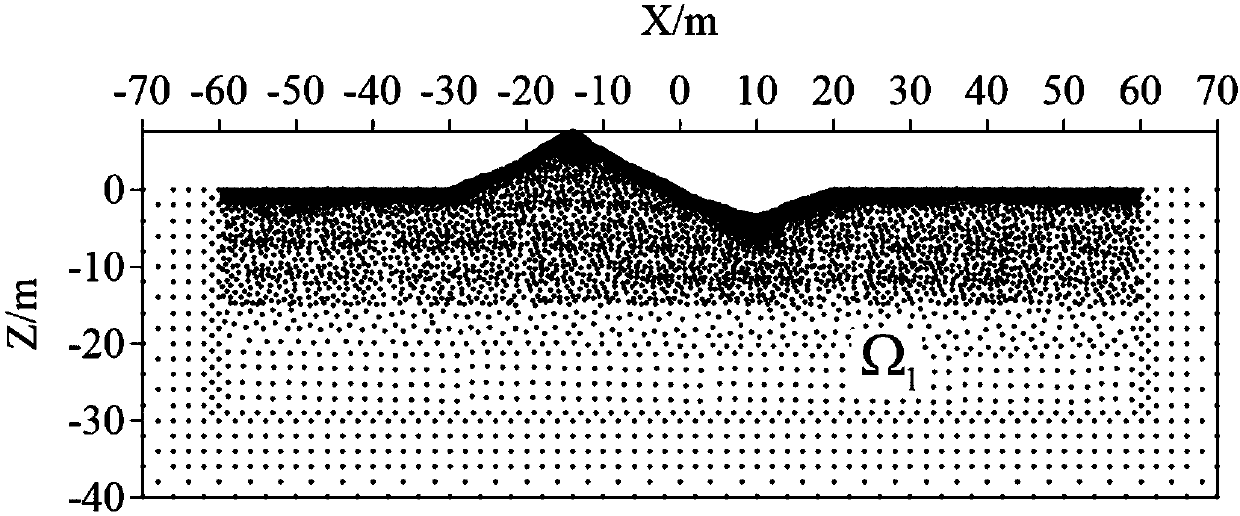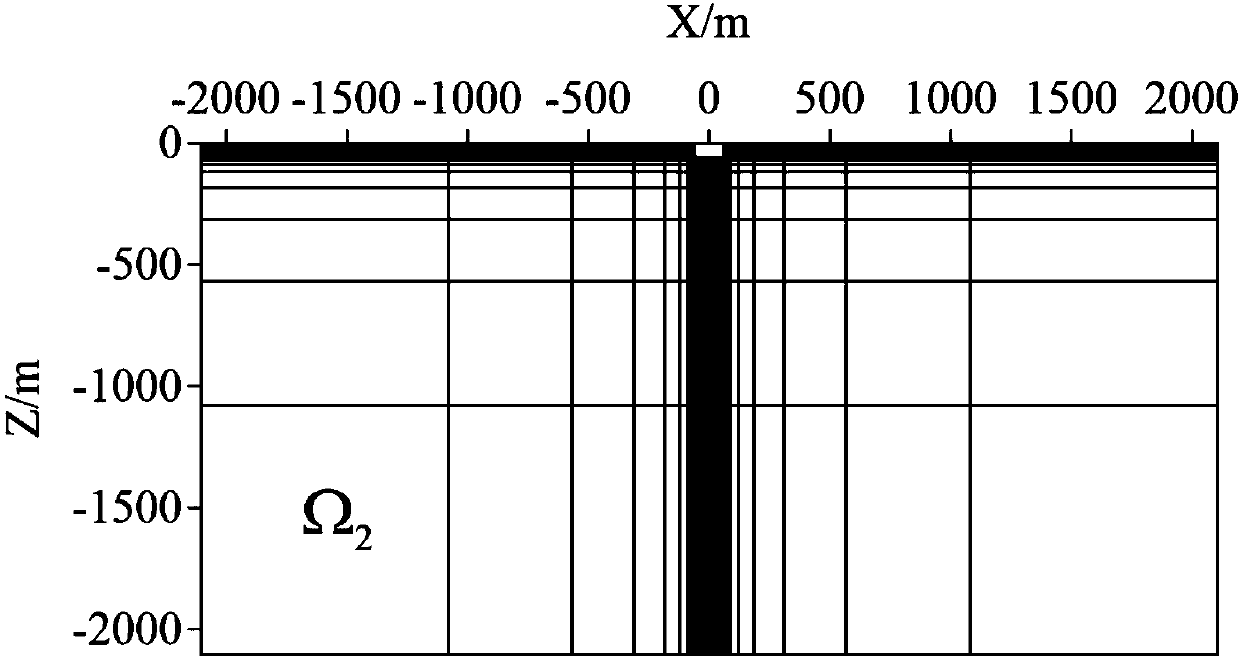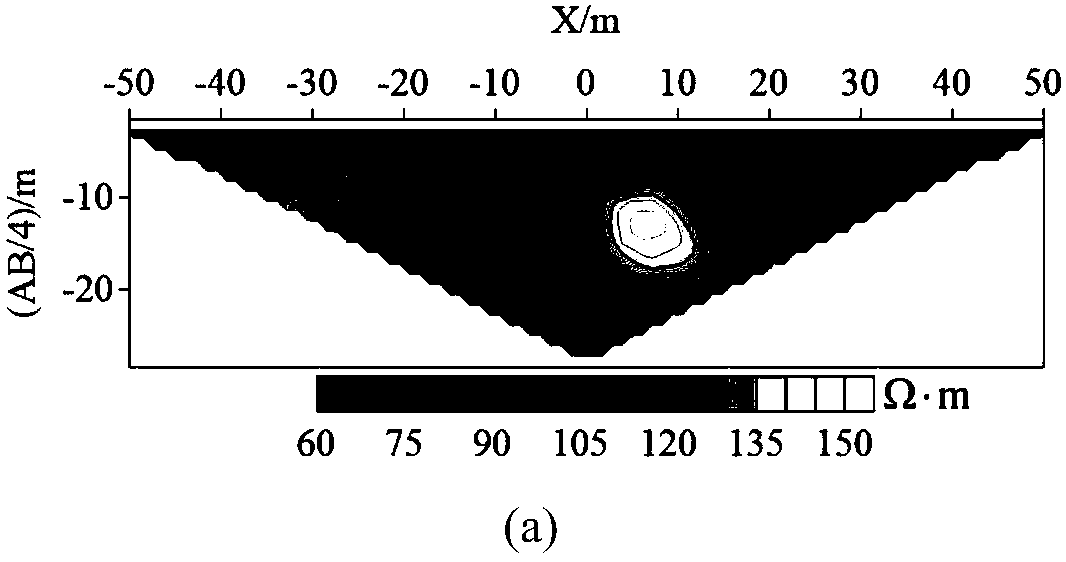Boundary treatment method of coupling direct-current resistivity element-free method with finite element method
A finite element, DC resistance technology, applied in electrical digital data processing, special data processing applications, instruments, etc., can solve the problems of increasing the calculation cost of the elementless method, low calculation efficiency, and time-consuming
- Summary
- Abstract
- Description
- Claims
- Application Information
AI Technical Summary
Problems solved by technology
Method used
Image
Examples
Embodiment Construction
[0075] The present invention will be further described below in conjunction with the accompanying drawings and specific embodiments.
[0076] The DC resistivity observation and calculation method involved in the present invention comprises the following steps:
[0077] Step 1. The design of the parameter file of the forward modeling geoelectric model: according to the distribution of the dielectric resistivity in the two-dimensional geoelectric model, the geometric shape of the abnormal body and the terrain fluctuation, the confidence file of the discrete nodes of the model is set, and the electrode layout and the observation device are set. and element-free method-related parameters.
[0078] Step 2. Peripheral finite element method subdivision file: establish a finite element method mesh subdivision file in the peripheral area of the model, and determine the area range, grid distribution, and node coordinates of the finite element method.
[0079] Step 3. Carry out elemen...
PUM
 Login to View More
Login to View More Abstract
Description
Claims
Application Information
 Login to View More
Login to View More - R&D
- Intellectual Property
- Life Sciences
- Materials
- Tech Scout
- Unparalleled Data Quality
- Higher Quality Content
- 60% Fewer Hallucinations
Browse by: Latest US Patents, China's latest patents, Technical Efficacy Thesaurus, Application Domain, Technology Topic, Popular Technical Reports.
© 2025 PatSnap. All rights reserved.Legal|Privacy policy|Modern Slavery Act Transparency Statement|Sitemap|About US| Contact US: help@patsnap.com



